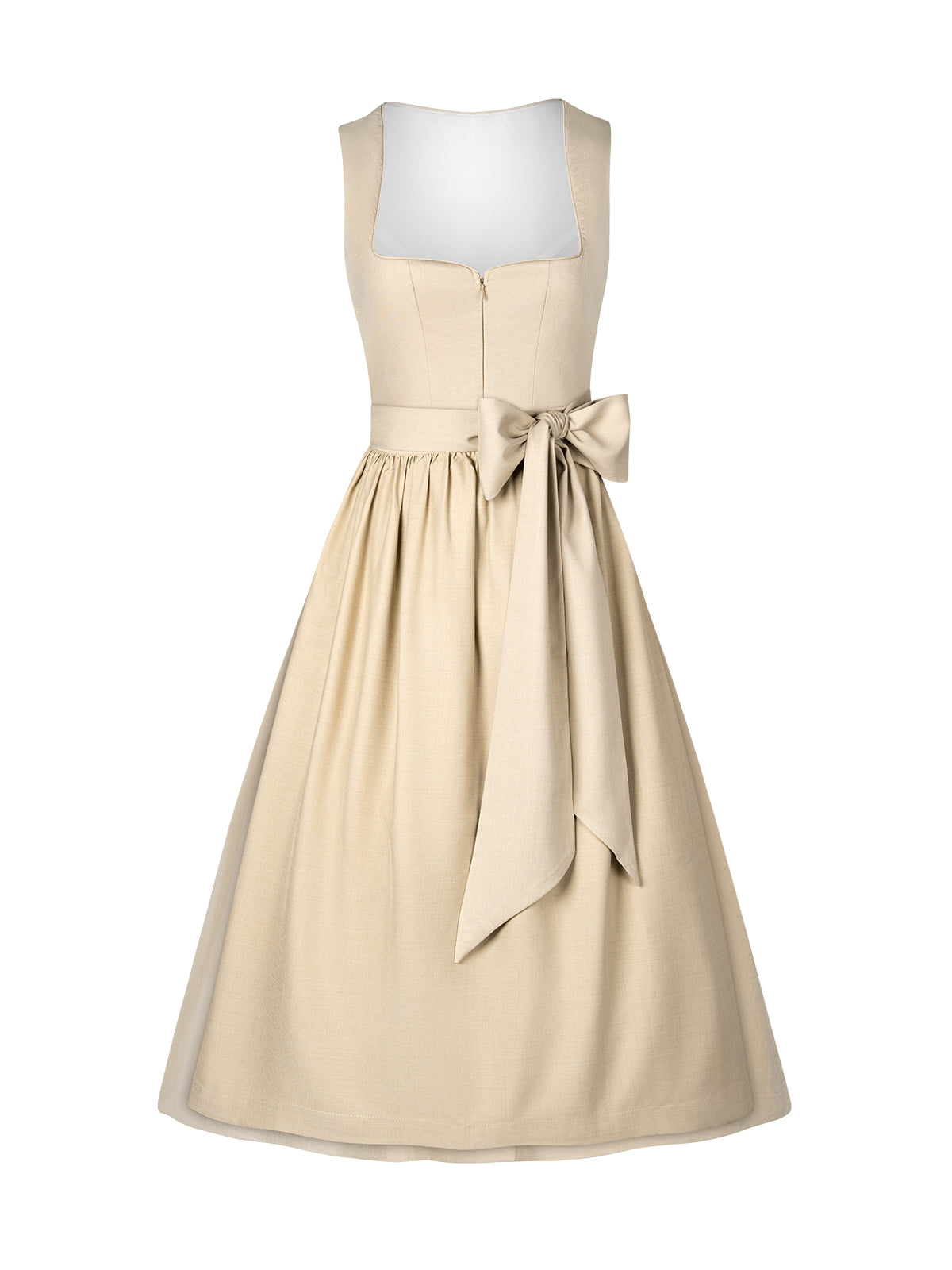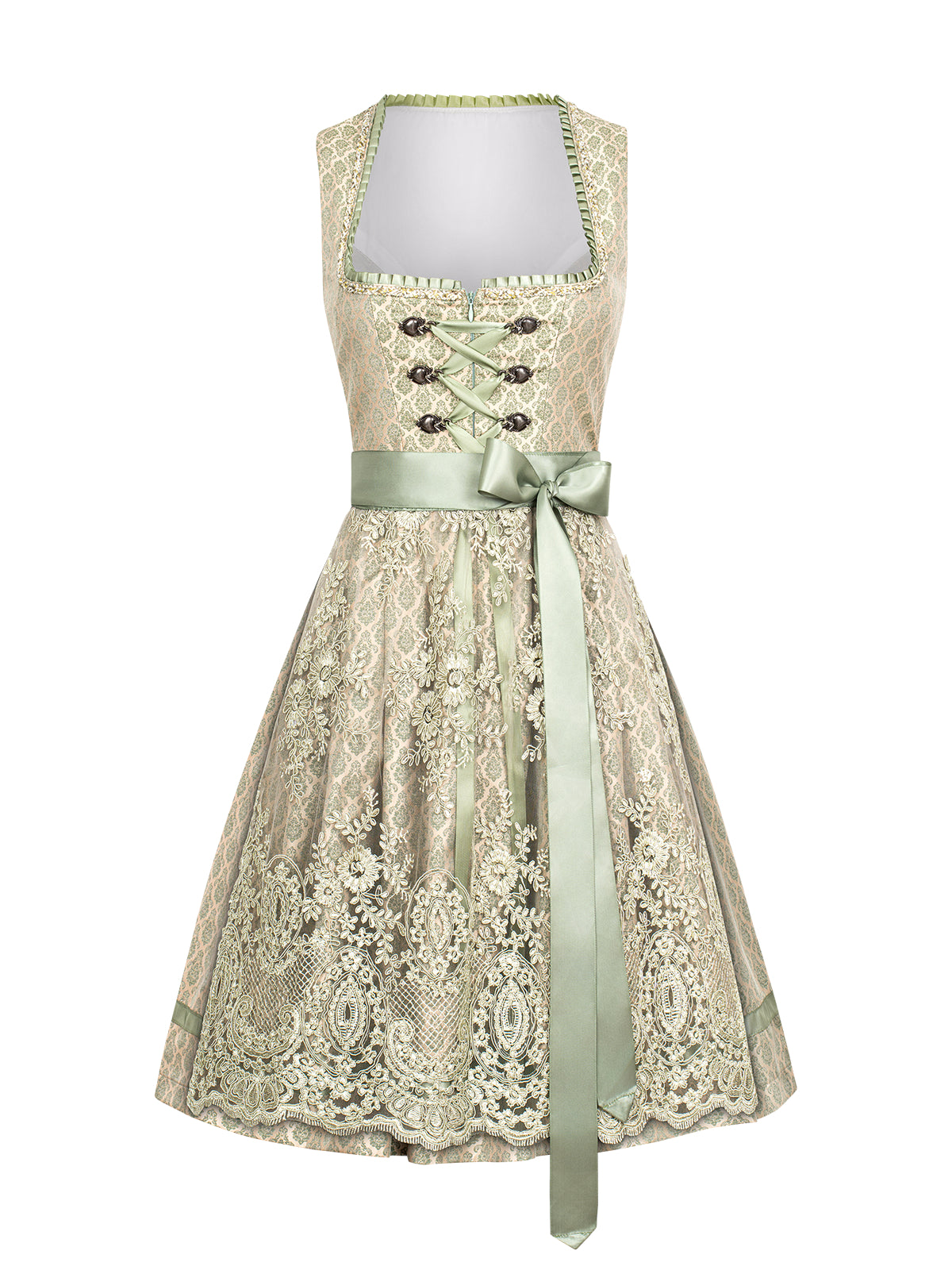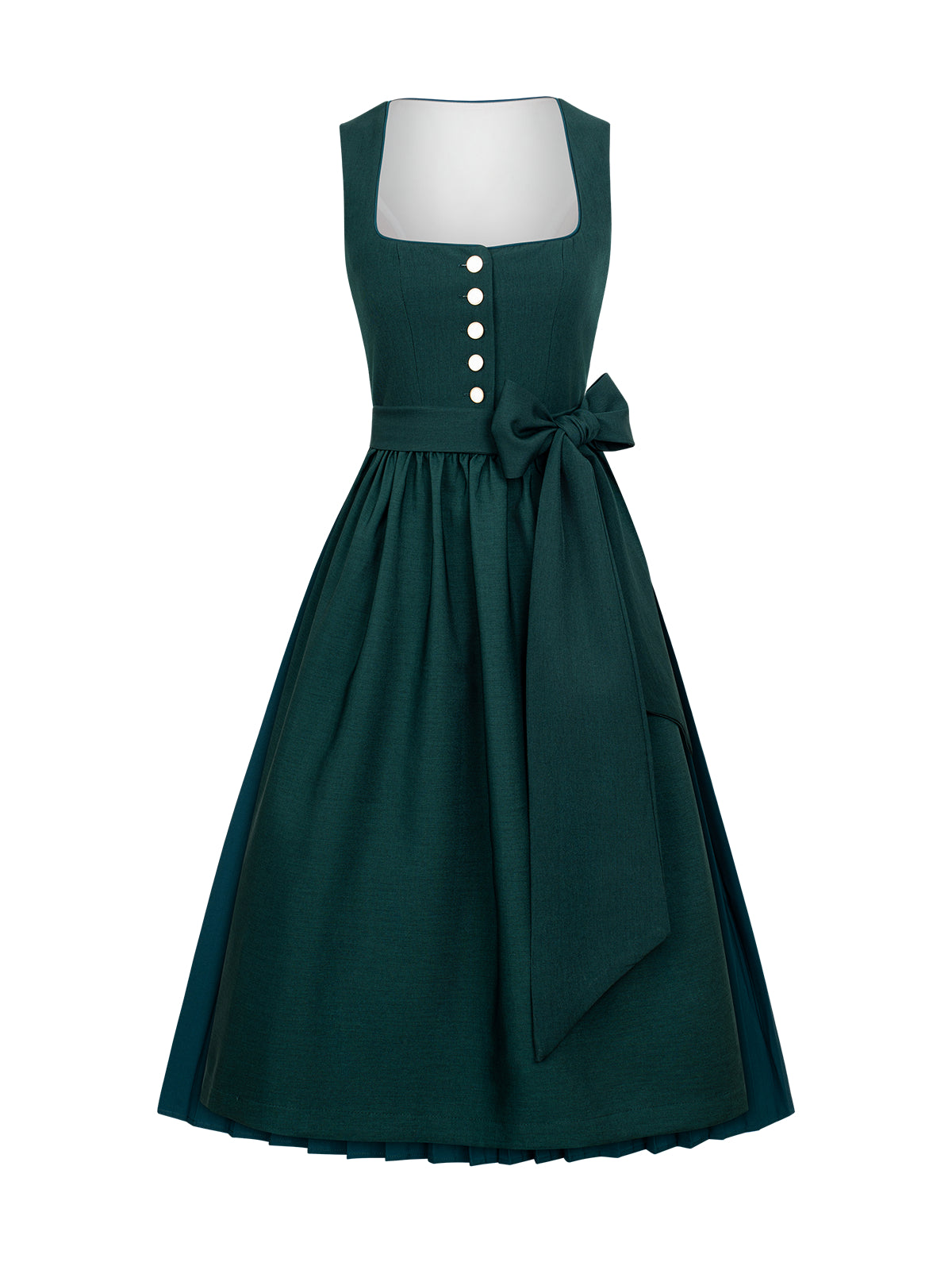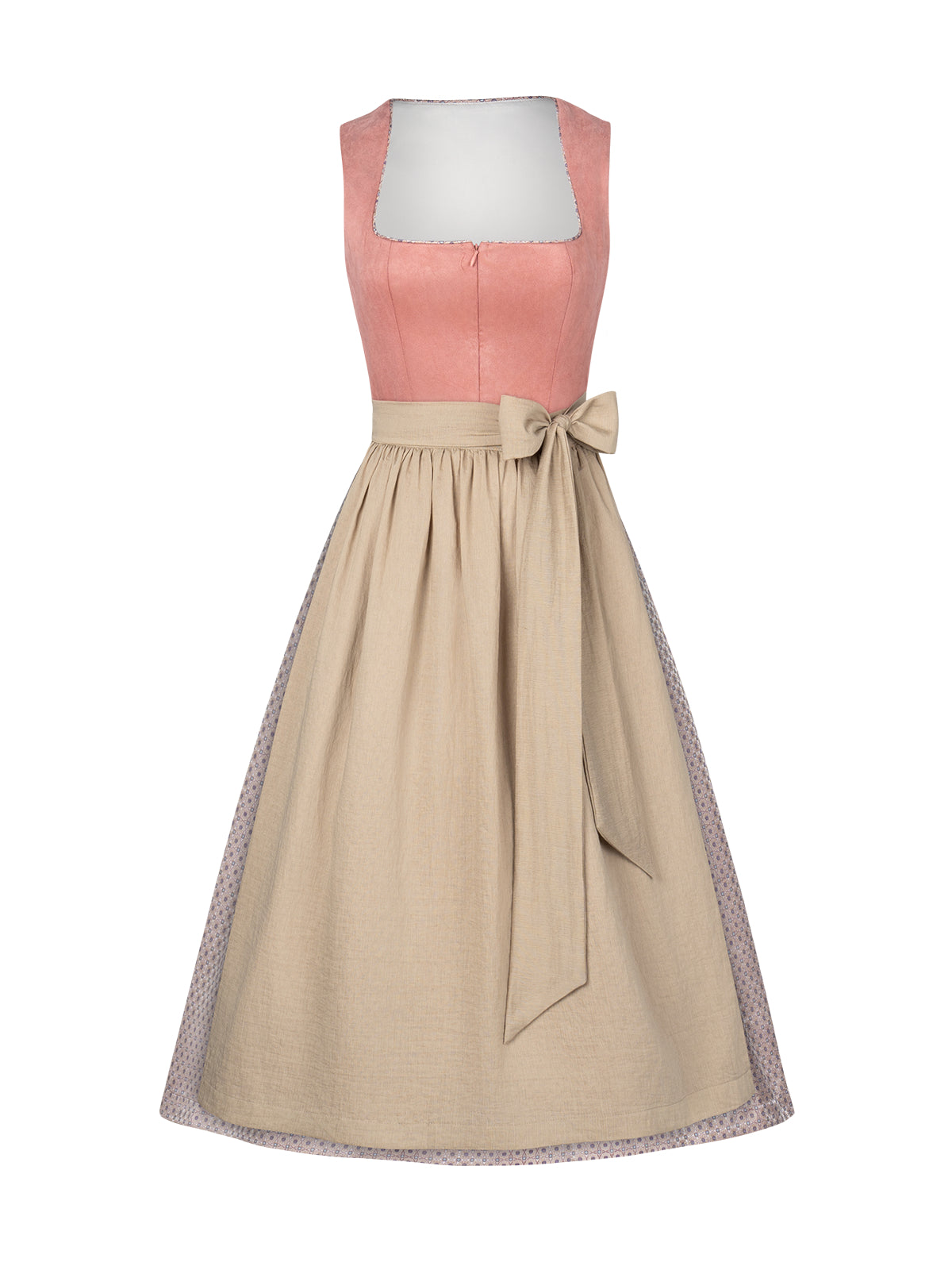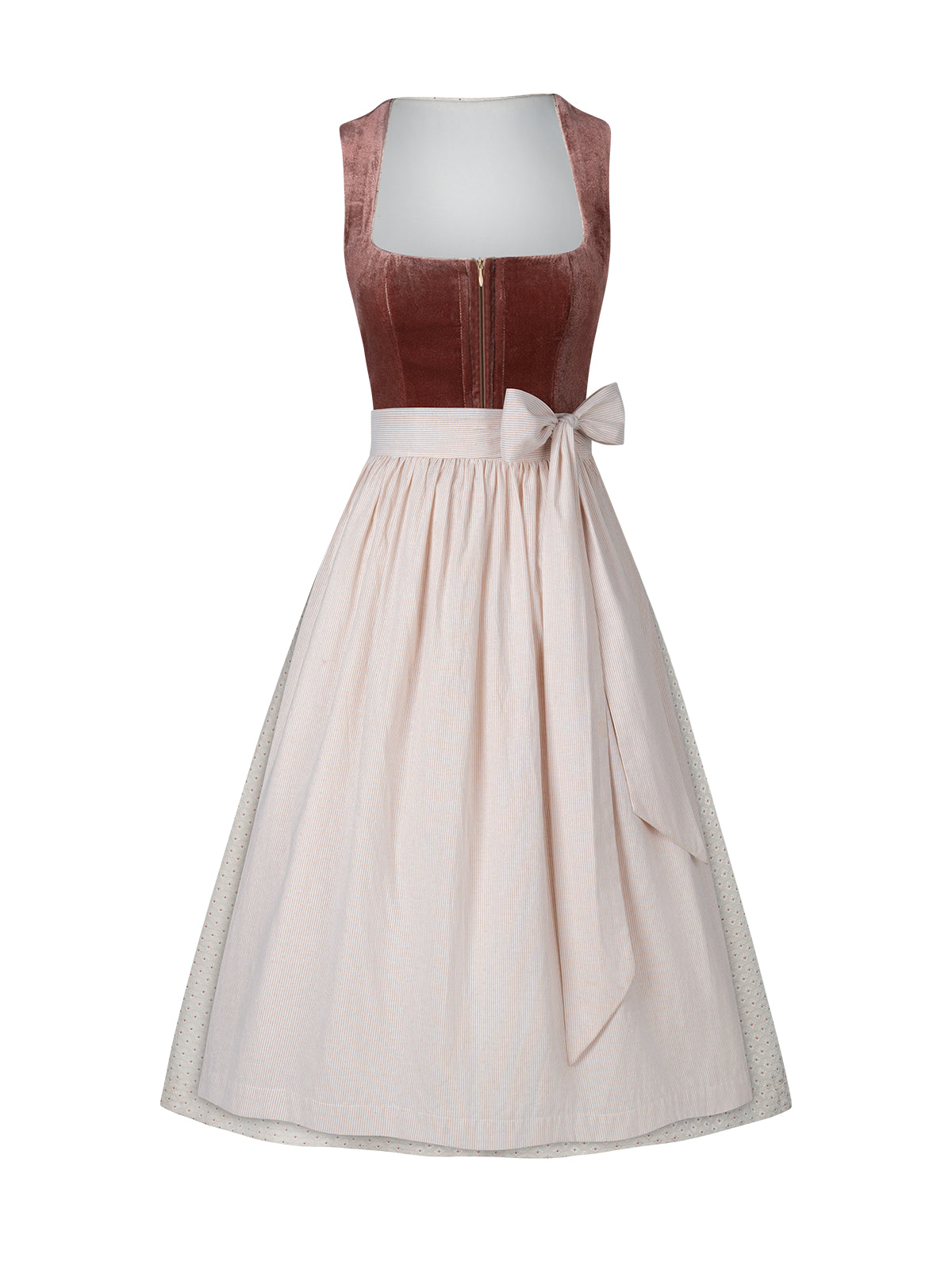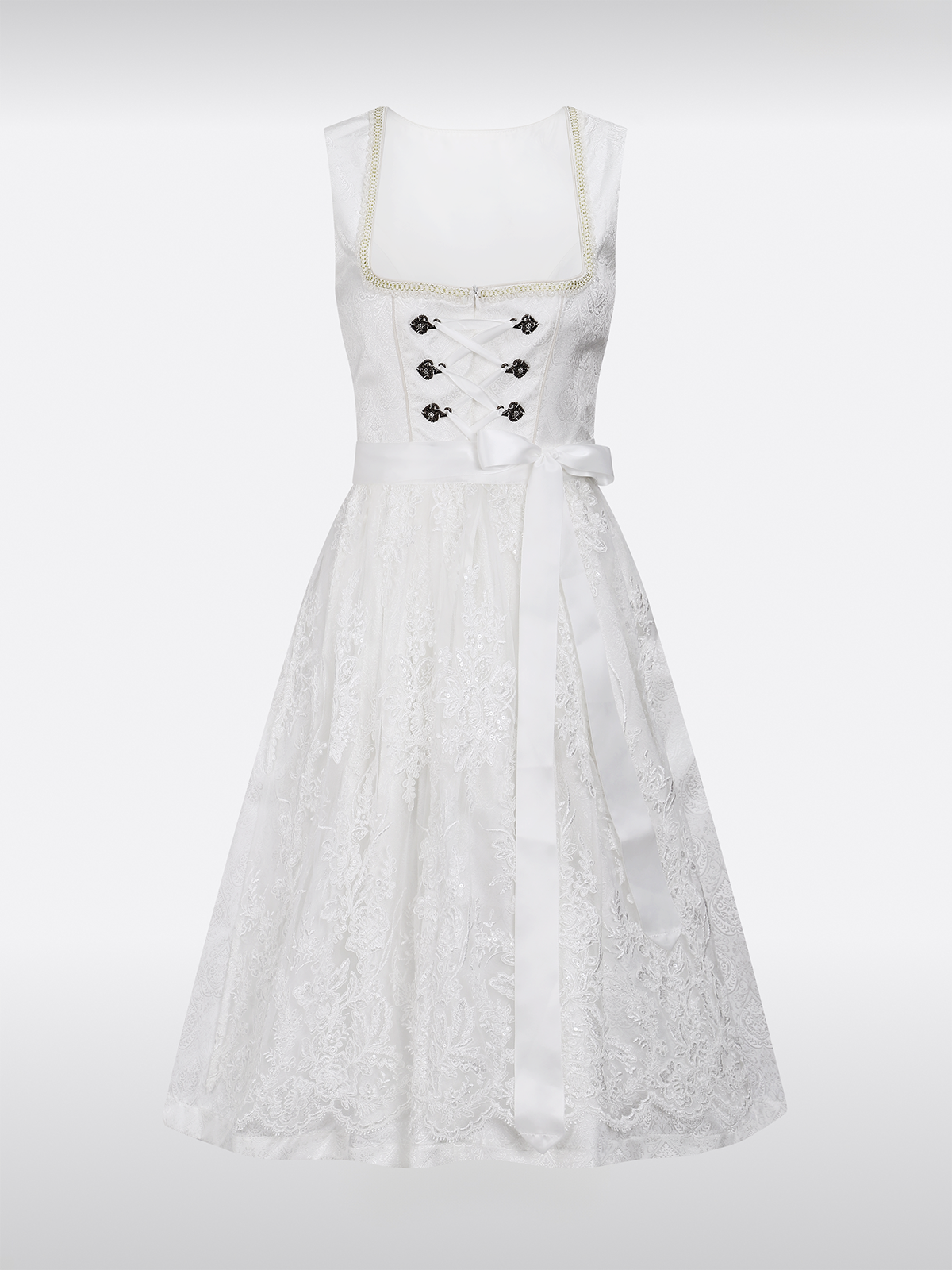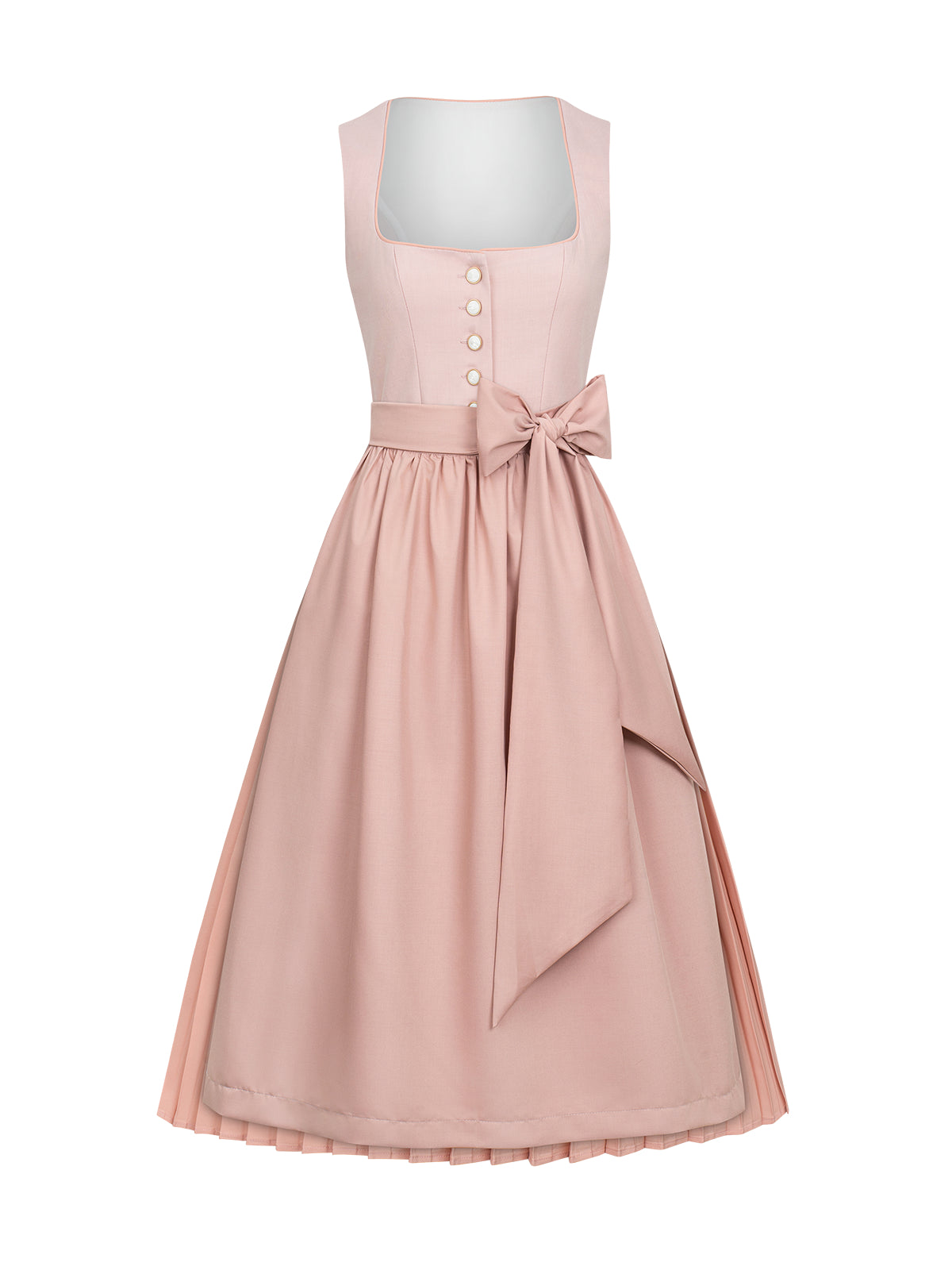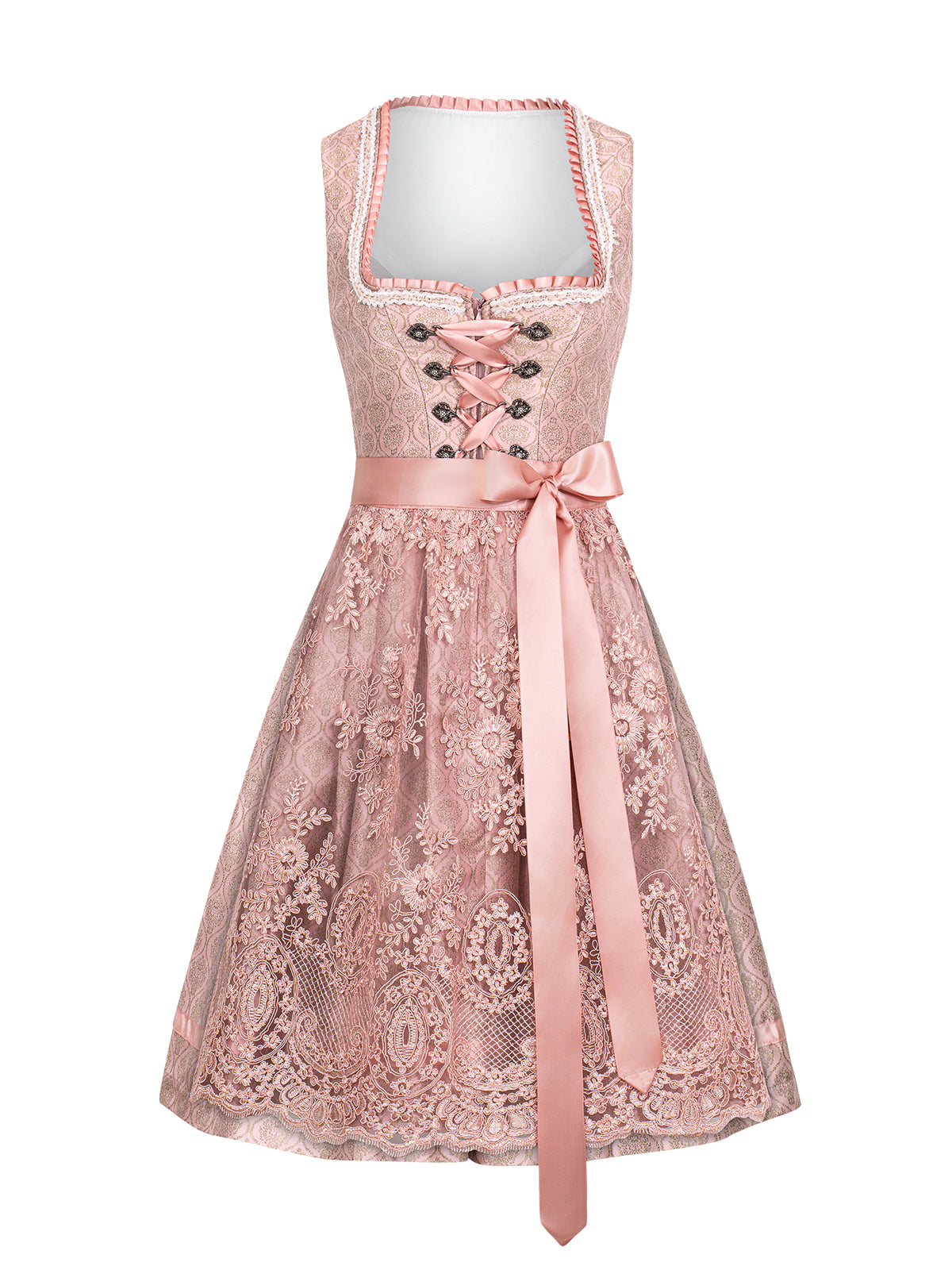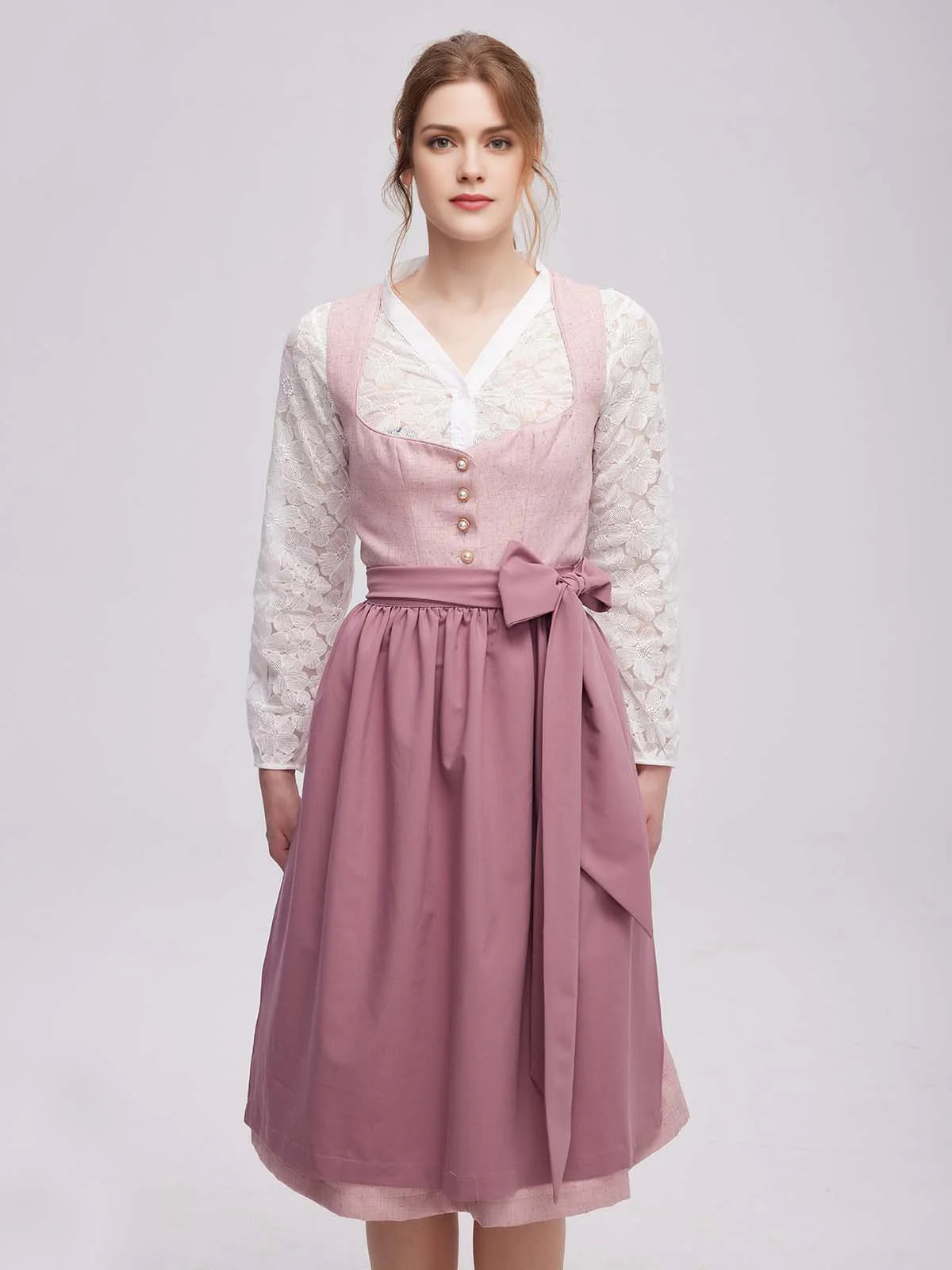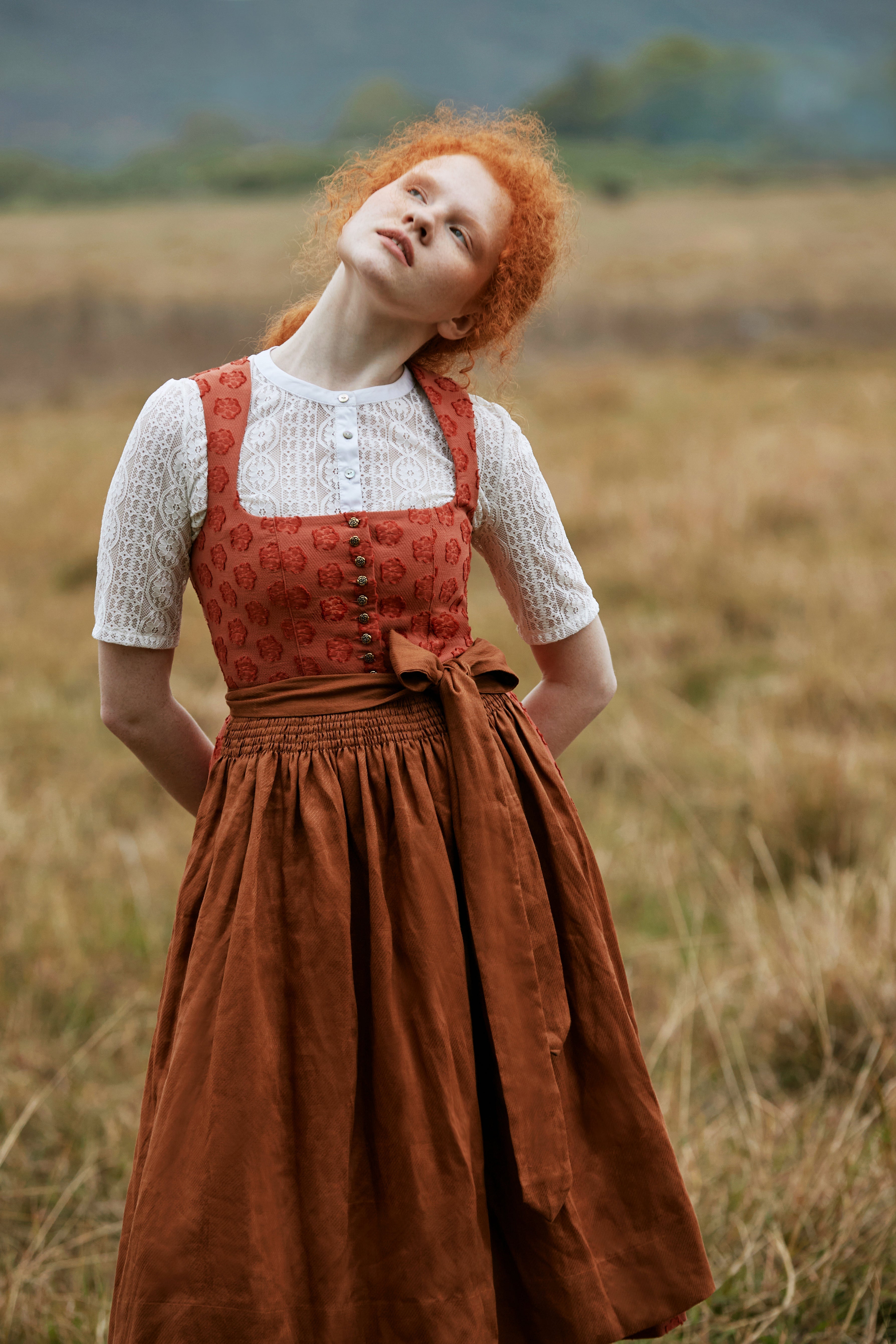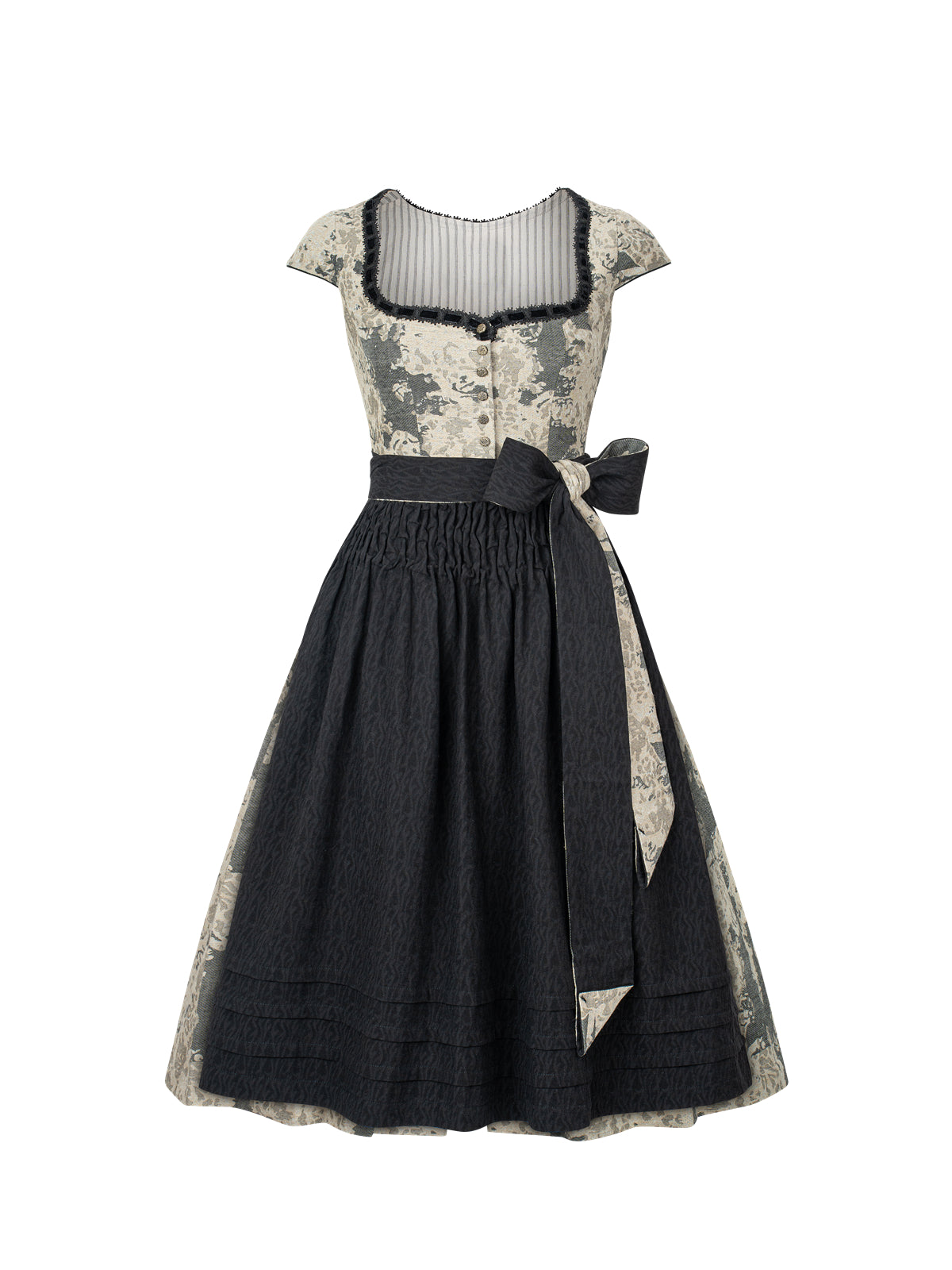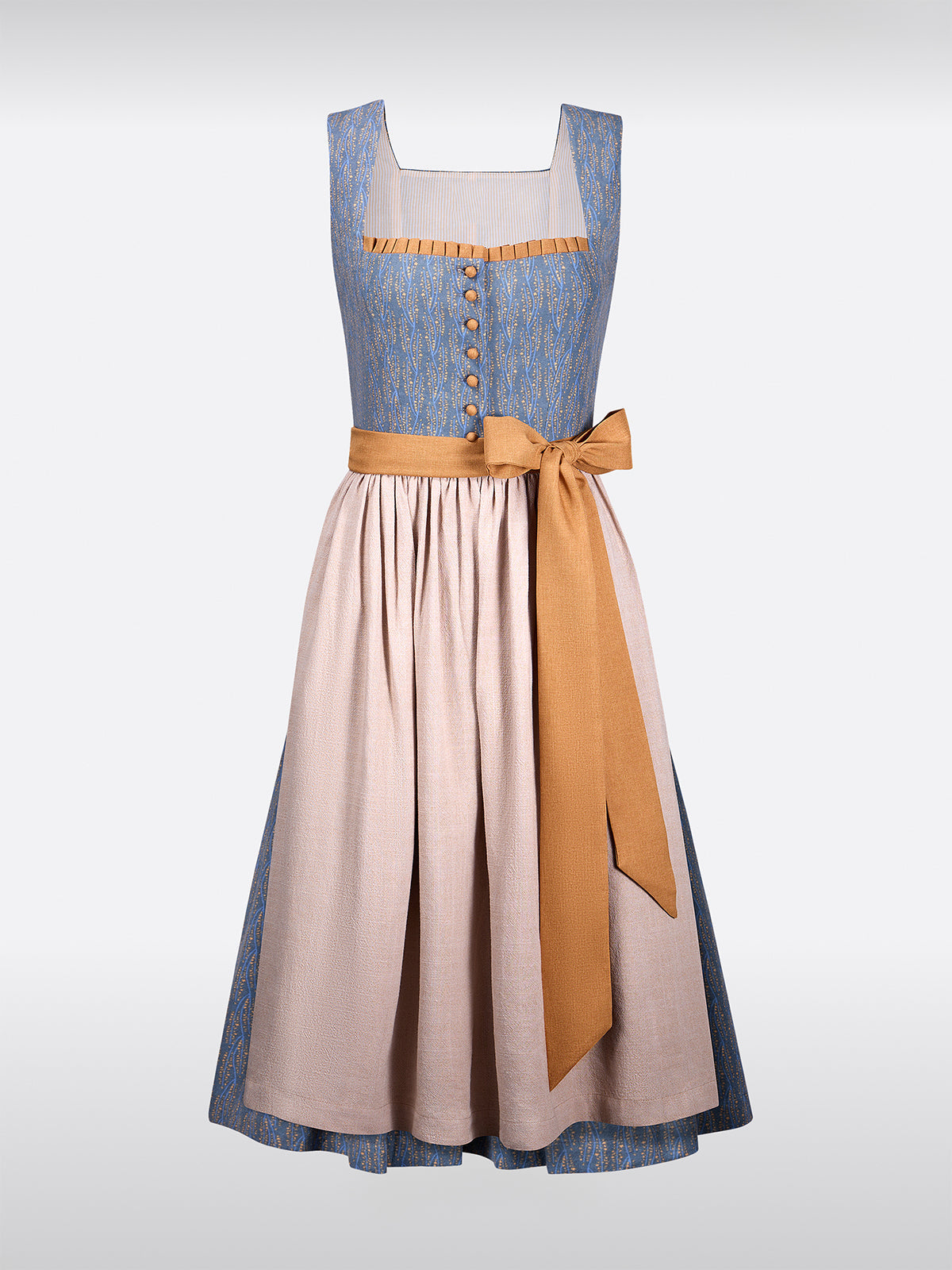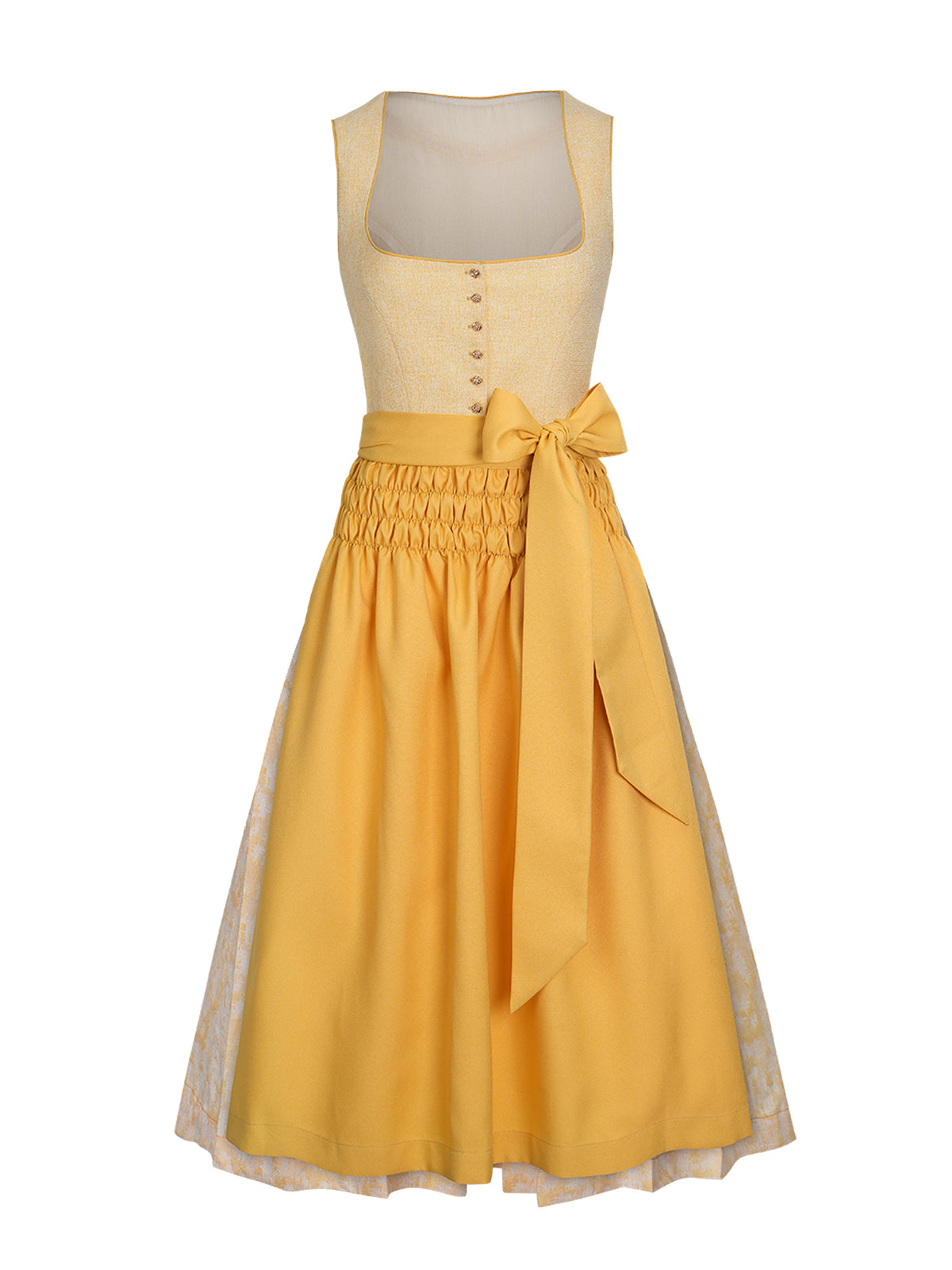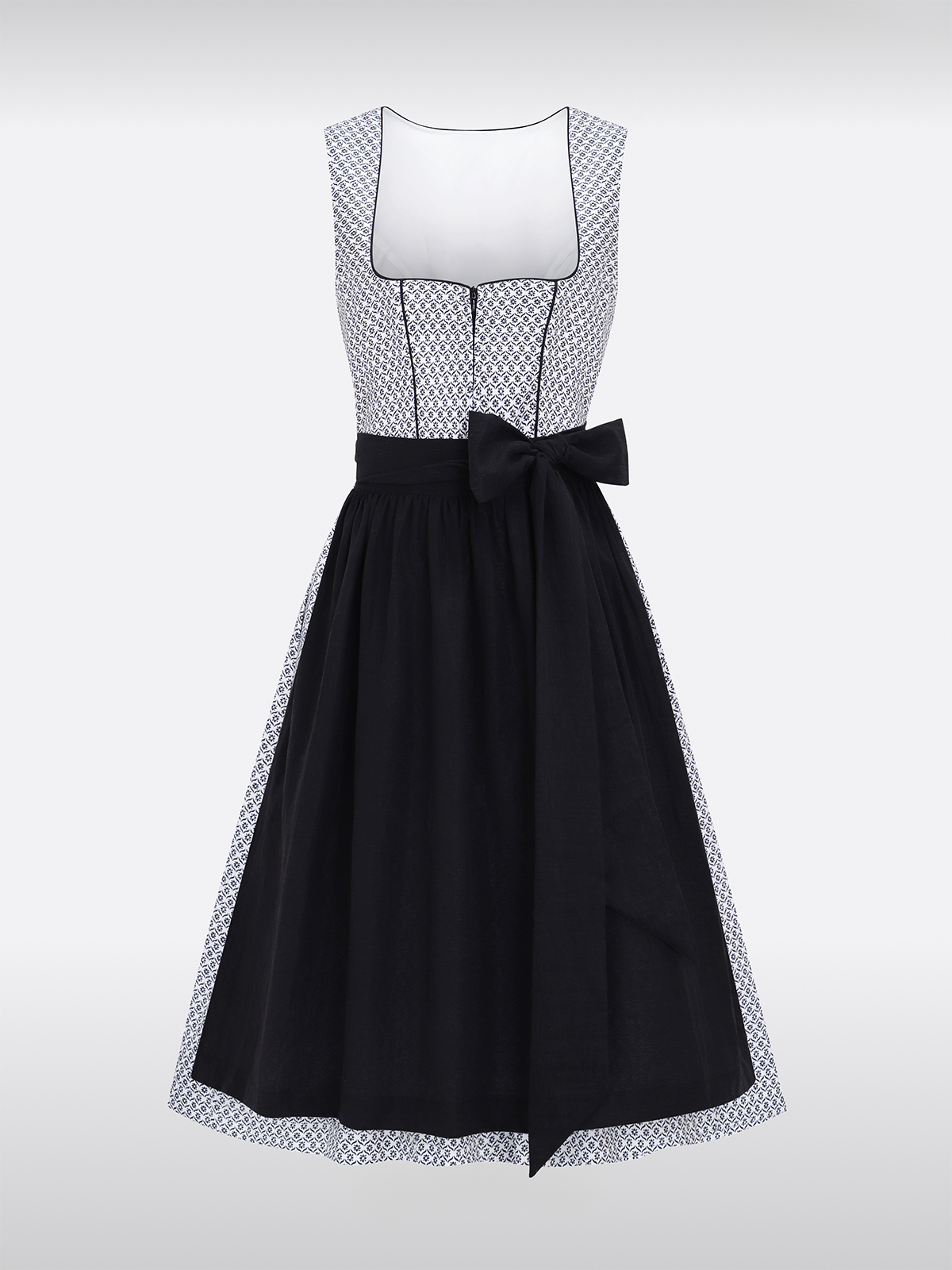The yellow dirndl: radiant elegance in sunny splendor
A yellow dirndl is a real eye-catcher—bright and radiant, like the sun itself. But there's more to this striking color than just a fashion choice. Yellow symbolizes joie de vivre, optimism, and energy, and for many women, a yellow dirndl is a way to emphasize their positive charisma. But how does the choice of this color influence the wearer's perception, and why is yellow often considered a bold choice in traditional costume?
Imagine a woman entering a festival wearing a bright yellow dirndl. Her movements are elegant, yet behind her radiant smile lies something deeper. The sun is setting, bathing the surroundings in golden hues, further enhancing her luminous appearance. But in contrast to her cheerful charisma, she feels a certain melancholy. The contrast between her radiant outer appearance and her inner state shows that colors don't always reflect what we feel inside. Yellow, as vibrant and cheerful as it appears, can also be a mask that conceals deeper emotions.
For women who wear a yellow dirndl, this choice is often a conscious one, designed to attract attention and project their energy. It's perfect for festive occasions in spring or summer, when the colors of nature harmonize with the dirndl's bright yellow. But the question remains: Does this striking color truly reflect the wearer's inner being?
Dirndl with front zipper: Practical and stylish at the same time
The Dirndl with front zipper is a modern evolution of the classic dirndl. For many women who appreciate the combination of functionality and elegance, the zipper offers a practical yet stylish solution. But what advantages does this design offer, and why are more and more women opting for this modern version?
Imagine a woman who normally prefers traditional lacing opts for a dirndl with a zipper down the front for an unexpected reason. Her life has become fast-paced, and she's looking for a way to adapt her wardrobe to modern demands. The zipper not only allows her to get ready more quickly but also lends her outfit a certain modernity. But this move toward practicality could also indicate a deeper change in her life. She's no longer the kind of woman who takes a long time to prepare—she's ready to embrace change more quickly.
The front-zip dirndl offers a stylish option for women who value comfort. It allows for quick entry while still retaining the classic look of the dirndl. The combination of traditional looks and modern functionality particularly appeals to women who want to find a balance between old and new in their lives. But this modern touch might surprise some observers – is this really still a traditional dirndl, or is fashion changing, and with it the wearer herself?
The Dirndl Rosalie: Romantic elegance in soft tones
The Rosalie dirndl captivates with its romantic floral elements and soft colors reminiscent of a blooming rose garden. It's the perfect choice for women who have a romantic and playful side and want to express this through their clothing.But how does this delicate design influence the wearer's behavior and what does it say about her inner world?
Imagine a woman who is interested in Dirndl Rosalie decides. Her movements are delicate, almost floating, as she walks through the room. The soft pink tones of the dirndl reflect her romantic side, yet her eyes betray a deep longing. The blooming garden where the celebration is taking place symbolizes her inner world—full of beauty, yet with a hint of fragility. While the flowers around her are in full bloom, she senses that this beauty is fleeting, just like the moments she experiences.
The Rosalie dirndl is for women who have a gentle, romantic side to them, yet are also profound and reflective. It's the perfect dress for special occasions like weddings or spring festivals where nature and the blossoming season take center stage. But the Rosalie dirndl is more than just a dress—it's a symbol of the wearer's inner world, full of emotions and longings.
The contrast between tradition and modernity: Yellow Dirndl vs. Dirndl with zipper
The contrast between a bright yellow dirndl and a modern dirndl with a front zipper could hardly be greater. While the yellow dirndl pays homage to traditional colors and patterns, the dirndl with a front zipper embodies a modern evolution of traditional costume. But how does this contrast influence the wearer's perception and behavior?
Let us imagine two women at a party – one in a yellow dirndl, the other in a dirndl with a zipper down the front. The woman in the yellow dirndl radiates joie de vivre and openness, but her movements are slower, almost hesitant. She wears a color that commands attention, yet she doesn't seem entirely comfortable in her role. In contrast, the woman in the dirndl with a zipper down the front is full of energy and determination. She moves quickly and efficiently through the crowd, as if the zipper symbolizes her inner determination and desire for control.
This contrast demonstrates that it's not just the outward appearance that influences the wearer's behavior, but also the functionality of the clothing. The zippered dirndl represents a modern woman moving in a fast-paced world, while the yellow dirndl represents a woman rooted in tradition but perhaps seeking a new direction in her life.
The Symbolism of the Background: How the Setting Influences the Story
In traditional costume, not only the dirndl itself plays a role, but also the context in which it is worn. The context in which the wearer moves can often symbolize her inner emotions and the direction of the story. A festival in a garden full of blooming roses, for example, can emphasize the romantic side of the woman in the Rosalie dirndl, while a hectic urban environment reflects the modern woman in the zipper-front dirndl.
Let's imagine the woman in the yellow dirndl is at a traditional folk festival. The sounds of music and joyful laughter fill the air, but she suddenly feels out of place. The colorful background, which normally radiates joy and lightness, reinforces her inner insecurity. In contrast, the woman in the dirndl with a zipper down the front moves through a modern, urban environment—she is fast, efficient, and in her element. The urban background reflects her inner world, where everything is fast and clearly defined.
Subtle actions as harbingers: How gestures guide history
It's often the small gestures that predict the course of a story. A hesitant glance, a gentle touch of the dirndl fabric, or a nervous tug at the zipper—all these subtle actions can reveal more about the wearer's inner world than words ever could.
Let's imagine Rosalie, the woman in the dirndl, gently stroking the floral embroidery on her dress. This small gesture not only demonstrates her attention to detail, but also a deeper connection to her romantic side. At the same time, we sense that she longs for something beyond the celebration. This gesture is a harbinger of a coming change in her life—perhaps a decision she must make or an emotional revelation that awaits her.
In contrast, the woman in the dirndl with a zipper up the front repeatedly nervously reaches for the zipper. This action could indicate inner turmoil, a feeling of losing control over a situation. The zipper, which normally represents simplicity and control, suddenly becomes a symbol of insecurity and indecision.
Conclusion: The symbolic power of dirndl fashion
Ultimately, it becomes clear that choosing a dirndl—be it a yellow dirndl, a dirndl with a zipper at the front, or the romantic Rosalie dirndl—is far more than just a fashion choice. Each dirndl tells its own story, one that is closely connected to the wearer's personality and inner feelings.

